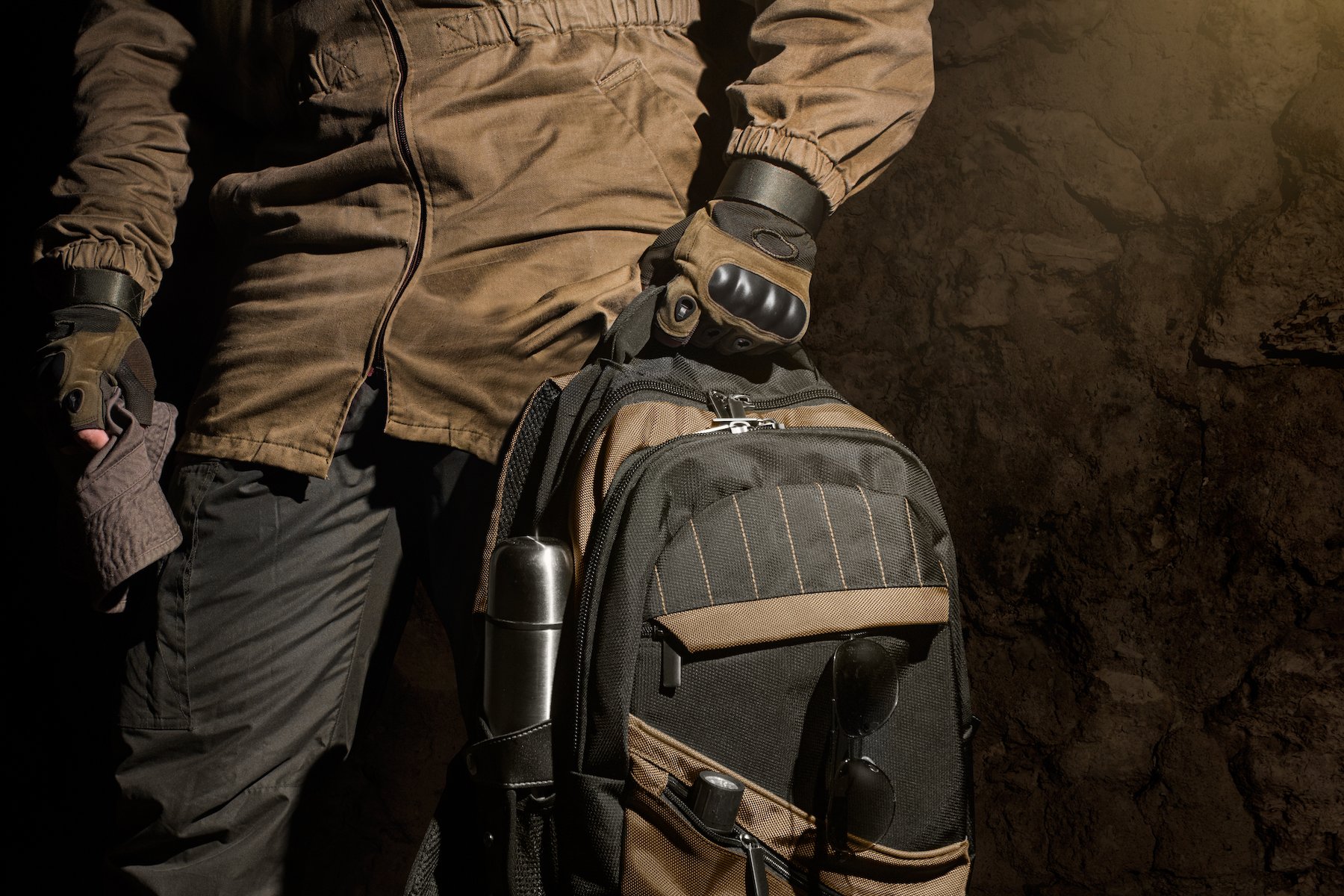Bugging out is definitely one of the more popular concepts when it comes to preparing for disaster. Many people have this idea that when things get extraordinarily bad in their city, they need to bug out to a remote location outside of any urbanized areas.
There are a couple of scenarios where people may need to flee their homes. Whether it is due to forest fires, floods or similar natural disasters, or other reasons.
Whatever concerns keeps you awake at night, it is better to be prepared, even if we won’t know if we’ve done enough until the day of catastrophe comes upon us. We all hope such a day never comes, but it’s a good idea to be prepared for the worst-case scenario.
With this in mind, today we’re going to share with you what bugging-out is, what you should consider if you decide to bug out, and a few tips to add to your success.

What is Bugging Out?
The term ‘bug out’ means your home base has been compromised, and you’re certain your area is going to become unlivable. In which case, you’ll need to grab your bug out bag and flee to an area you determined ahead of time as your safe zone.
It’s important not to panic during this time and to follow your bug-out plan. And keep in mind that what you assess as a safe zone beforehand may no longer be safe after this devastation happens.
Should You “Bug Out” or “Bug In”?
The opposite of bugging out, bugging in simply means staying in your home instead of fleeing out. But staying in doesn’t mean doing nothing. You still have to protect your home base and your loved ones from whatever the catastrophe is.
There are many cases when you should bug in instead of out, here are some of them:
- Not everyone in your family is physically capable of bugging out
- There is no safe destination nearby
- The surviving chance of staying is higher than leaving
- You don’t want to abandon your home
- You have means to protect your family
- You have enough supply for days or weeks
Bugging Out Preparation
If you choose to bug out, there are multiple things you should take into consideration. Trying to stay ahead of the game will give you a greater shot at surviving in such a tough situation:
1. How Will You Get to Your Location Safely?
Knowing where you’re going to bug out to and having a bug out bag are the first and most important steps you need to do while you still can. But we won’t talk about it here as they deserve their own guides.
The next important thing to consider is how to get to this location safely. With a car? Will you have to walk or ride a bike? If it’s the latter ones, are you and your loved ones physically capable to do it?
Be sure to have more than one route to reach the location. If one route is compromised, you still have the alternative.
2. Are You the Only One Who Knows About It?
Is this safe zone a place only you and your loved ones know about? Or is a location where other people may also head to?
If you think other people are going to be there too, you might want to consider a different spot. The more people who go to the same location, the more resources you’re going to need to survive as inevitable you will have to share your rations.
Depending on the threat level you’re preparing for, you might need to choose a place off the beaten path. If it isn’t, it will be easily detected and attract many people, which could be problematic.
3. What to Do When You Reach the Location
When you reach your safe zone, the journey is only starting. You must figure out how to get everything set up for survival.
Be sure you have proper shelter, food, a cooking source, a heat source, and ample water. You must secure natural food sources to extend the resources you stashed ahead of time or brought with you.
You’ll need a plan for the future, and you should figure this out as quickly as possible.
4. People Are Still People
There are people who work hard and prepare ahead, there are also those who are not well-prepared and always rely on others. If you’re going with them, they’re going to expect you to take care of them.
The choice is yours, and we’re not telling you to abandon them. But, it’s still very important to bug out with like-minded people. So you have to let your loved ones know how to be prepared and independent. You can’t always support everyone.
Otherwise, you’ll have those who will drain your resources putting strain on the chances for you and your family to pull though.

How to Improve Your Bug Out Success Rate
It doesn’t end once you’ve reached the bug out location. More than the journey itself, there are many things to do and prepare before the event and after you’ve reached the location.
Follow these tips to help you have the greatest chance for success:
1. Get in Shape
I’m not your doctor, and I’m not trying to be. This is a stern reality. If you aren’t in a good enough shape where you can walk long distances, bugging out isn’t for you.
Take this time to work on your physical health. The goal is to be able to carry a decent amount of weight and walk longer distances, if necessary.
If this is unlikely or if you have people in your family who is physically challenged, consider having bikes or horses and make sure everyone can use them.
2. Pack Healthy Food
You can’t go into bug out mode and run on junk food. Make sure your bug out bag includes healthy snacks.
Dehydrated foods are a great way to power your body with proper nutrients while not requiring refrigeration or taking up a great deal of space.
3. Protect Your Feet
When you’re bugging out, you may not be fortunate enough to walk on paved or dry roads, but when heading into the hills, having proper foot gear is vital.
Therefore, make sure you choose comfortable and strong shoes which offer plenty of support. Try to have shoes which are waterproof too.
4. Care for Your Bug Out Bag
Include only important items in your bug out bag and don’t overload it because this will only weigh you down.
You must also pay attention to how you pack your bug out bag. You don’t want to damage any of the items while hiking.
5. Water
Your body can go up to a week without food, but you can only survive three days without water. So be sure you include plenty of water in your bug out bag, and also make sure your bug out location has a sustainable water source.
Having a water purifyer or knowing where to obtain water in the woods will be a divinate life saver.
6. Correct Clothing Matters
The act of bugging out can be hard on your body. You may have to cross through water, it may take days to reach your location on foot, and you may have to sleep outside overnight.
Wearing proper clothing is important. You need clothing which will breathe, can dry quickly, and can also provide warmth on cold nights.
7. Get Some Rest
Be prepared to rest when you’re bugging out. Your body is going to be going through all kinds of internal chaos.
Your life has been flipped upside down, and you’re doing strenuous physical activity. Take breaks when needed.
8. Share the Load
Some people have a location for their entire family to meet in. If this is your plant, spread out the heavy gear between everyone.
If you need tents, spread the equipment load to avoid one person being exhausted from carrying an extra-heavy load.
9. Protect Your Mental Health
Mental health is going to be a big deal when catastrophe strikes. If you haven’t considered your mental state when bugging out, you’re not fully prepared.
Pack your CBD oil, any prescription meds you may require for balanced mental health, and any other item which can help calm your mind because if there was ever a time you’ll need it, this will be it.
10. Lighten the Load
Sometimes we get carried away when packing bags for vacation. It’s going to be even easier to overpack when preparing a bug out bag.
Try to store as many items as you can in your bug out location prior to when it’s needed. Items you’ll need to get to the location safely is what your bag should include. Too many items can make the trip harder.
11. Set-Up Properly
When you arrive at your bug out location, make sure you set up properly and efficiently. If there is a chance you might be there for a while, how you set up the camp will determine the practicality of living in seclusion.
Make sure you know how to survive off the land prior to being forced to do it. Take time to research what you must know now.
Bugging out isn’t something which will work for everyone in every situation, but if you’re considering bugging out as a survival alternative be sure to follow these tips to have the best understanding and chance of survival.
Hopefully you won’t have to use this information, but it’s great to be knowledgable and prepared for a survival situation.

Bugging In vs Bugging Out Pros and Cons of Each
One of the most divisive topics in the prepper and survival community is whether to Bug In or Bug Out when disaster strikes. Many people tend to fall into one camp or the other, not considering the different factors that determine whether you stay or go. What are the advantages and disadvantages of Bugging In vs. Bugging Out?
Bugging In?
Bugging In means staying put when a disaster happens. However, to do this, consider the following:
●Is your home adequately fortified against the elements, intruders and other potential dangers?
●Is your home off grid?
●Do you have enough supplies stockpiled to enable you to survive for an extended period?
Pros of Bugging In
●Familiarity
Staying in familiar surroundings enables you to feel more comfortable during stressful situations. It also allows you to build protective structures and a home security system and plan defensive strategies more efficiently.
●Suitable for Less Mobile Family Members
Bugging Out means living off the land and staying on the move to find new resources. This can be a tough life for some family members such as elderly grandparents, disabled people, or young children who have limited mobility. Bugging In enables you to create a safe space for the whole family regardless of age or ability.
●Gives You Control Over Your Environment
Bugging In gives you control over your environment, allowing you to anticipate potential dangers and plan accordingly. This also means that you can preemptively begin stockpiling supplies and improving your home’s self-sufficiency.
Cons of Bugging In
●Not Ideal for Urban Areas
Densely populated areas are not ideal during a Bug In situation. Panic and hysteria can sweep through the population, and a well-prepped home may become the target of unprepared neighbors, stretching your resources to the limit. You may also become the target of looters or vandals. Ensure you have a high-quality home security system in place to keep your property and family safe.
●Hygiene May Become an Issue
Sanitation and waste disposal can be problematic in a post-collapse environment, potentially exposing you and your family to harmful microorganisms. If you plan on Bugging In, you need a foolproof sanitation plan. This may mean building a gravity septic system or installing an incinerator for garbage.
●Escape May Be More Difficult
If you need to leave your premises, escape may be more difficult once you have Bugged In. Hostile members of society may view well-prepped people as a target, or you may become cut off from emergency assistance due to extreme environmental changes. Always ensure you have a backup plan that makes leaving your home safe.

Bugging Out?
Bugging Out should be considered a last resort if your home or family is threatened with imminent danger. It means that when disaster strikes, you take your bug out bag and get out of town fast. Usually, you will have a predetermined place to ride out the storm that has been stocked with essentials to supplement the gear in your Bug Out bag. But there are a few things to think about before you decide to Bug Out.
●Is your vehicle reliable, and do you have a backup mode of transport?
●Do you have a Bug Out location prepared and stockpiled with sufficient supplies?
●Is your Bug Out location sufficiently hidden to avoid looters or the dangers of a populated area?
●Is your family healthy enough to travel?
Pros of Bugging Out
●Can Find the Best Survival Location
The wilderness offers places to hide in case you are being tracked. You can also respond to changing events and environments faster.
●Harder Target for Looters
Since you are carrying your possessions and supplies with you, you are less of a target for looters and hostiles. However, try to stay on the move as much as possible and stay away from densely populated areas until you reach your Bug Out location to avoid unnecessary confrontations.
●Unlikely to be Trapped
Staying on the move means you are less likely to be trapped in an undesirable social or environmental situation. Ensure your vehicle is well-maintained, so you have the option to move on from your Bug Out location.
Cons of Bugging Out
●Requires High Level Survival Skills
Living off the land is challenging, so you need to have advanced survival skills to make Bugging Out in the wilderness work safely. You need to be able to build a shelter, keep warm, hunt, fish and respond to wilderness emergencies.
●Increased Dangers
Bugging Out puts you at the mercy of the environment, and unfortunately, accidents can happen to even the most prepared survivalist. This also means there is a lack of access to emergency medical assistance if someone in your party becomes sick or injured.
●Lack of Defensive Structures
Staying on the move makes it difficult to build defensive structures for security which can make you a target for predators or hostiles. Carry a weapon with you while traveling. If traveling in a group, watch in shifts when camping for the night. And once you arrive at your Bug Out location, build defensive structures as quickly as possible.
●Resources May Be Limited
Bugging Out means you can only carry a limited amount of supplies with you on the road. Unless you have a method to source additional resources, food, water and fuel will run out quickly. Have a ration plan to ensure your resources last as long as possible and map out the route to your Bug Out location so you can scope out areas where you have a better chance of finding supplies.
Which is Better?
In the end, the best option is the one that gives you and your family the best chance of survival which depends largely on your level of preparedness and the type of survival situation you are facing. Whether you choose to Bug In or Bug Out, always have a well-stocked Go Bag ready and accessible at all times.
